Table of Contents
Centrophenoxine (Lucidril® or meclofenoxate) is one of the original nootropics. Developed in France in 1959, Centrophenoxine is a combination of DMAE (dimethylethanolamine) and pCPA (parachlorphenoxyacetic acid).
DMAE is an amine naturally produced in small amounts in your brain. Researchers speculate that DMAE may increase acetylcholine (ACh) levels in the brain by inhibiting choline metabolism in peripheral tissues.
By preventing the use of choline by other tissues (including synthesis into acetylcholine), DMAE increases choline levels in the bloodstream.
But DMAE on its own does not easily cross the blood-brain barrier. Combining DMAE with pCPA seems to help this bioavailability issue.
pCPA is a synthetic version of auxins (plant growth hormones). Auxins act like natural growth factor in plants.
Once digested, Centrophenoxine breaks down into DMAE and pCPA in the liver. This combination was found to make DMAE more bioavailable in the body. And helps DMAE cross the blood-brain barrier more readily.
Centrophenoxine helps:
- Neurotransmitters. Centrophenoxine seems to temporarily boost acetylcholine in the brain.[i] Which could have an effect on cognitive performance and memory.
- Neuroprotectant. Centrophenoxine reduces lipofuscin in the brain. Lipofuscin is a cellular waste product that accumulates in cells as we age. It’s the same waste product that causes brown liver spots on skin. Centrophenoxine eliminates nearly half of the accumulation of brain lipofuscin in just 8 weeks.
- Brain Energy. Centrophenoxine improves cerebral blood flow and oxygen in the brain.
Overview
Centrophenoxine (meclofenoxate) is one of the original nootropics. And it’s backed by 50 years of research.
Centrophenoxine is sold as the prescription medication Lucidril® in some parts of the world. In other countries like the USA it’s sold as an OTC supplement.
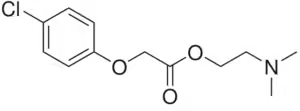
Centrophenoxine is an ester (chemically-derived) compound of DMAE and pCPA. DMAE seems to increase choline levels by preventing uptake of choline in peripheral tissues in the body. Since choline is a precursor to acetylcholine, more choline in your brain may raise acetylcholine levels. pCPA is a synthesized version of a plant growth hormone.
This combination helps DMAE cross the blood-brain barrier more easily than just supplementing with DMAE.
Centrophenoxine may be a good addition to your nootropic stack. It’ll increase your brain energy levels by boosting oxygen flow. It helps flush out dangerous free radicals and cellular waste. And will help improve memory and cognition.
Centrophenoxine vs. DMAE: What’s the Difference?
DMAE is used to make Centrophenoxine. DMAE is found in small amounts in your brain. A good food source of DMAE is fish.
But there is little evidence that DMAE as a supplement actually crosses the blood-brain barrier. And if it provides the brain enough choline needed to make acetylcholine.
Centrophenoxine seems to solve the blood-brain barrier problem. Adding pCPA to DMAE helps DMAE enter your brain. And this combination also seems to be an effective way to boost acetylcholine.
If you’re considering adding DMAE to your stack, Centrophenoxine may be a better alternative.
How does Centrophenoxine Work in the Brain?
Centrophenoxine boosts brain health and function in several ways. But two in particular stand out.
- Centrophenoxine helps improve memory.[ii] It does it in part by boosting the enzyme acetylcholinesterase in the brain.[iii] This is the enzyme needed for breaking down acetylcholine once it does its job in the post-synaptic neuron. The choline is then liberated to be taken up by the pre-synaptic neuron where acetylcholine is once again synthesized with the help of Acetyl-CoA and choline acetyltransferase.
Researchers set out to prove this in a clinical trial using lab rats. In this study they compared Centrophenoxine with DMAE. And determined that DMAE was about half as potent as Centrophenoxine in boosting choline and ACh levels.[iv]
Increased acetylcholine activity helps short-term memory, concentration, and learning.
- Centrophenoxine takes out the cellular trash. Lipofuscin are more commonly known as age pigments.[v] They show up as “age spots” or “liver spots” on aging skin. And they hide in cells throughout your body. Including your brain, liver, kidneys, heart, adrenals and nerve cells.
Lipofuscin are the product of oxidation of unsaturated fatty acids. They also contain other cellular heavy metal waste like mercury and aluminum.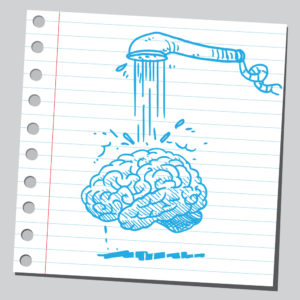
The buildup of this toxic mess is caused by a breakdown of your normal cellular waste disposal function. Centrophenoxine helps remove lipofuscin from brain cells. And from cells throughout your body.
The beneficial effects of Centrophenoxine were observed in several lab studies on older animals. Administration to these animals significantly increased life-span, and it boosted learning ability compared to age-matched controls.[vi]
How Things Go Bad
As we get older, our brain chemistry and energy metabolism changes.
↓ Brain cell membranes degenerate from toxic buildup
↓ Memory, recall, reaction time and mood diminish
↓ Acetylcholine levels decline
All of these age-related changes are contributing factors to the neurodegenerative diseases of aging. Including Alzheimer’s and dementia.
But even if you’re not concerned with anti-aging, Centrophenoxine can help.
Centrophenoxine benefits
Centrophenoxine is one of the oldest and most studied nootropics available today. It was developed in France in 1959. Primarily in the search for  something to combat age-related cognitive decline.
something to combat age-related cognitive decline.
Centrophenoxine is a combination of pCPA and DMAE. Some studies show that DMAE may boost acetylcholine levels in the brain by preventing choline uptake in the peripheral system in the body. Thus providing more choline which could be used to synthesize acetylcholine. But there’s very little evidence that it can cross the blood-brain barrier. pCPA seems to solve that transport problem.
Centrophenoxine is water-soluble and quickly enters your brain after you take it. Once in your brain, it boosts signal transmission, and protects neurons.
Centrophenoxine gets to work right away by temporarily boosting acetylcholinesterase in parts of the brain. This enzyme is needed for the synthesis of acetylcholine. And it gets busy clearing cells of free radicals and lipofuscin.
How does Centrophenoxine feel?
Centrophenoxine offers a gentle brain energy boost when you take it first thing in the morning. You’re able to remember things a little easier. Recall when you need it seems effortless.
Some neurohackers report that Centrophenoxine works well stacked with Aniracetam, Noopept, and Piracetam. It may work in part by providing some of the extra acetylcholine racetams demand when you take them.
And if you dose half in the morning, and the other half early afternoon, you should feel a brain energy boost throughout your day.
Centrophenoxine Clinical Research
Centrophenoxine Relieves the Symptoms of ADHD
A prescription form of DMAE called Deanol was used in the 1960’s and 70’s to treat learning and behavioral problems in children. What’s now known as ADHD.
A 3-month, double-blind, placebo-controlled trial involving 74 children was conducted in 1975. They were split into groups and given 40 mg. of Ritalin or 500 mg of Deanol (DMAE). Positive results from this trial showed DMAE comparable to Ritalin in effectiveness in controlling ADHD.[vii]
Centrophenoxine is Anti-Aging
Centrophenoxine is not only an effective cognition booster, it helps reverse the effects of aging in your brain. Much of brain cell membrane is made of phospholipids (fat). And it oxidizes as we age. In other words, free radicals build up. And are not removed from cells efficiently the older we get.
Aging brain cells also get clogged up with lipofuscin. Lipofuscin are the product of oxidation of unsaturated fatty acids. They also contain other cellular heavy metal waste like mercury and aluminum. You see lipofuscin show up as ‘age spots’ on older skin. The same thing happens in your brain.
Studies have shown that Centrophenoxine helps ‘flush out’ free radicals and lipofuscin from brain cells.[viii] And used by younger neurohackers, helps this cellular waste from building up in the first place.[ix]
Researchers in Hungary conducted a double-blind clinical trial with 50 people suffering from dementia. Average age was 77 years. They gave one group 2 grams of Centrophenoxine for 8 weeks.
They found that Centrophenoxine rehydrated ‘intracellular mass’. Proving this compound as a powerful free radical scavenger. It removed free radicals from aging brain cells. And restored them to a healthy state.[x]
In another study in India, researchers worked with male Wistar rats aged 4, 8, 16 and 24 months. They used these ages because they correlate with human aging from young to elderly.
Just like in humans, lipid oxidation and lipofuscin concentration increased with age. The experiment also showed that cellular free radical damage and lipofuscin buildup happened at the same time.
This buildup of cellular waste contributes to age-related decline in neuronal electrical activity (neural signaling). Cognition, memory and learning are all affected. The research team found that Centrophenoxine had no effect on younger rat brains. But in the two older age groups they saw a significant decrease in lipid oxidation and lipofuscin concentration.
Showing conclusively the anti-aging action of Centrophenoxine.[xi]
Centrophenoxine Improves Memory
Centrophenoxine boosts neuronal glucose and oxygen uptake in the brain. And helps the production of RNA and protein. RNA is derived from DNA in the cell nucleus. And enable neurons to form proteins. Which help encode memory and repair damage to brain cells.
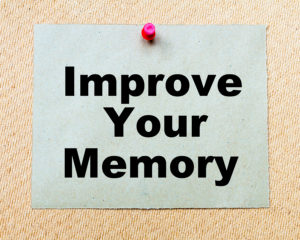 In one double-blind clinical trial, researchers worked with 50 people suffering from ‘dementias of medium level’. They gave the group 2 grams of Centrophenoxine, or a placebo for 8 weeks. 48% of the group that received Centrophenoxine showed improvements in memory.[xii]
In one double-blind clinical trial, researchers worked with 50 people suffering from ‘dementias of medium level’. They gave the group 2 grams of Centrophenoxine, or a placebo for 8 weeks. 48% of the group that received Centrophenoxine showed improvements in memory.[xii]
Another study was made of the effects of Centrophenoxine on the learning and memory of old mice. One group of mice were treated for 3 months and the other group received a placebo. The treated animals showed a significant improvement in memory and learning.[xiii]
Centrophenoxine Recommended Dosage
Centrophenoxine dosage is typically 500 mg to 1 gram daily.
If you’re stacking it with a racetam, split your dose. So a 1-gram dose would be 500 mg first thing in the morning, and the other half early afternoon.
Centrophenoxine seems to help increase choline and acetylcholinesterase in the brain. Which is needed for the synthesis for acetylcholine.
But keep this in mind; Centrophenoxine and DMAE are related to choline. They are not the same as choline. Centrophenoxine should not replace a regular choline source like Alpha GPC or CDP-Choline. But Centrophenoxine can be stacked with a choline source.
And yet some neurohackers take Centrophenoxine as a choline source to include in their racetam stack. Or use it as a nootropic on its own. Experiment and see what works best for you. YMMV.
Centrophenoxine Side Effects
Centrophenoxine has been used as a nootropic for nearly 50 years. So it’s safety is well established. It’s non-toxic and should be well tolerated by most neurohackers.
Some reported side effects include stomach upset, body odor, drowsiness, confusion, increased blood pressure, moderate depression, and irritability.[xiv]
If you deal with epilepsy or bipolar disorder you should avoid Centrophenoxine entirely.
Centrophenoxine could cause a boost in acetylcholine. So an excess of acetylcholine could cause the above-mentioned side effects.
Cycling Centrophenoxine with 5 days using it, and a 2-day break should eliminate any acetylcholine toxicity.
Where to buy Centrophenoxine
Centrophenoxine comes in powder form and capsules. Capsules are typically 250 – 400 mg.
Buy Centrophenoxine here: Click for Pure Nootropics – Centrophenoxine
Centrophenoxine is water-soluble so it’s not necessary to take it with a fat or oil. You may find it absorbs better or more quickly when taken with food.
Nootropics Expert Recommendation
Centrophenoxine 500 – 1,000 mg per day.
 We recommend using Centrophenoxine as a nootropic supplement.
We recommend using Centrophenoxine as a nootropic supplement.
Your body does not make Centrophenoxine on its own. And it’s not available from food. This nootropic is a combination of DMAE and pCPA, and is only available in supplement form.
In some countries Centrophenoxine is prescribed as Lucidril® for treatment of Alzheimer’s or age-related cognitive decline.
Studies show Centrophenoxine helps stop or reverse brain degeneration by clearing out free radicals and lipofuscin from brain cells. Making Centrophenoxine one of the primary anti-aging nootropics.
Centrophenoxine also boosts available choline. And a few studies show it can at least temporarily increase acetylcholinesterase. The enzyme needed for the synthesis of acetylcholine. Which would boost cognition, memory, recall and learning.
But we do not recommend using Centrophenoxine as your primary source of choline in your nootropic stack. We have much better acetylcholine precursors available to us including Alpha GPC and CDP-Choline.
We suggest starting with a dose of 500 mg daily. Possibly more depending on your racetam usage.
Age-related cognitive disorders like Alzheimer’s may want to up the dose to 2,000 mg per day.
Buy Centrophenoxine here: Click for Pure Nootropics – Centrophenoxine

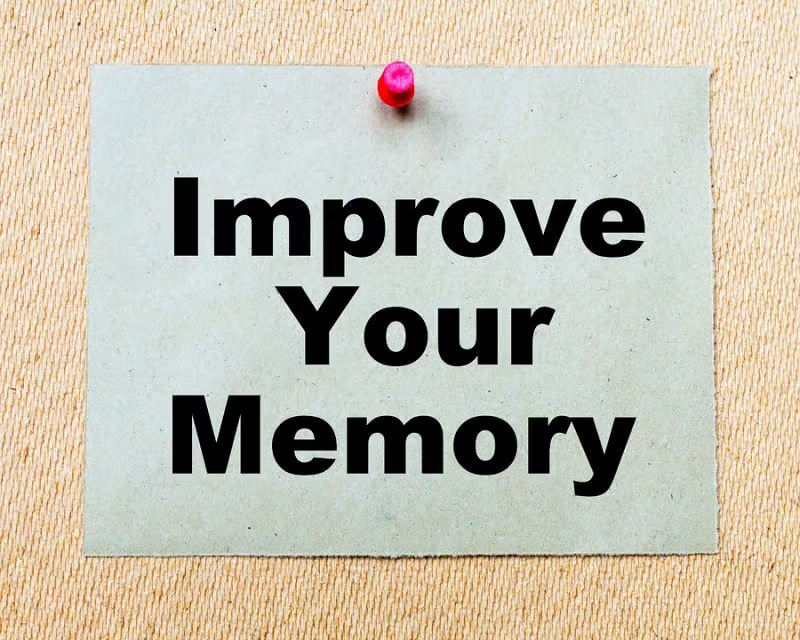
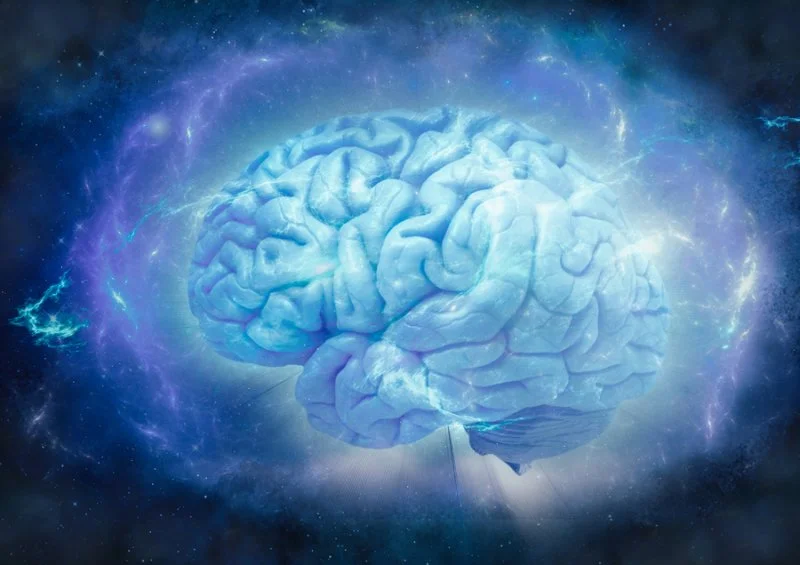






Join The Discussion - 108 comments
Choppy
February 2, 2022
Is DMAE is on WADA’s prohibited list or can be use by professional athletes? Because Centrophenoxine (Meclofenoxate) is.
David Tomen
February 2, 2022
Choppy, it is not on the list as far as I can tell.
Marcie Webber
August 23, 2021
1) Can Centrophenoxine, ALCAR & L-carnosine be used long term?
2) Does ALCAR & L-Carnosine be recycled too? Like Centro?
Am taking Centro for lipofuscin, clean my whole body with waste.
L-Carnosine for longevity and reduce shortening of telomeres.
ALCAR to boost Centro fight with lipofuscin L carnosine side effects.
Am just experimenting all my first bottles; all in lowest or recommended dose twice a day 8AM & 4PM Haven’t done any recycling yet.
Centro 250mg caps from Super Smart
L-Carnosine 500mg caps from Bulk Supplements
ALCAR 500mg from Life Extension.
This is just a portion of the stack I am taking which i love the review & benefits. Any advice or recommendations aside from my query?
Today I dwelt on knowing more of SE syndrome, MAOI, MAO, SSRI, SNRI etc. Am comprehending slowly, yet not sure whether what I an taking now plenty! with so many ills am facing are synergistic. Will deal next time.
Thank u again David for your kind attention and time. God bless
David Tomen
August 23, 2021
Marcie, where are you getting this “cycling” thing from? This question seems to be coming up over and over again and it’s driving me crazy. Because none of these supplements need to cycled. It doesn’t make any sense to cycle them once you understand how they work.
I’d be grateful if you can tell me where you’re getting this from because I’d like to track the person down and find out where they got their education from.
Wong
July 26, 2021
Hi David
I have realize you have been replying slow to the fellow community at nootropicsexpert. I hope you are fine and doing well. I need you to recommend a stand-alone Centrophenoxine that is pure with no nasty ingredients. Most of the products I found is count of 50 with unknown brands. Thanks in advance
David Tomen
July 26, 2021
Wong, my apologies for getting to questions and comments later than usual. I had major back surgery about 1 1/2 weeks ago and the recovery is brutal.
The only Centrophenoxine that I know of that is pure and have a Certificate of Analysis to prove it are these guys: https://bit.ly/371g913
Doc Swaim
June 24, 2021
I took pharmaceutical Lucidril and Piracetam throughout college and medical school. That combination was probably as close to the “Limitless” drug as anything will ever be. The centrophenoxine and meclofenoxate powders widely available now are not even close to equivalent to Lucidril. Does anyone have a source for pharmaceutical Lucidril?
Christopher Drennen
August 15, 2021
So you are saying that it is not OK to take DMAE but it IS OK to take Centrophenoxine which is a cholinergic precursor to DMAE?
David Tomen
August 15, 2021
Cristopher, I assume you are asking this of Doc Swaim? Because I don’t recommend either one. Centrophenoxine is not a precursor but is a combination of DMAE (dimethylethanolamine) and pCPA (parachlorphenoxyacetic acid).
But the mechanism of action is largely the same and indirectly may boost acetylcholine but it does it by robbing cells of choline. Seems to me a better idea for increasing acetylcholine is Alpha GPC or CDP-Choline.
André
April 10, 2021
Hi David,
Is it OK to stack Centrophenoxine with Phosphatidylcholine?
Best regards
André
David Tomen
April 16, 2021
André, PC supports the use of Centrophenoxine.
Mostafa
April 4, 2021
I think you meant to say it increase acetyl choline synthase not esterase
As the esterase breaks acetyl choline
David Tomen
April 4, 2021
Mostafa, according to the clinical studies I looked at “Centrophenoxine activates acetylcholinesterase activity” and not *synthase (https://pubmed.ncbi.nlm.nih.gov/7558197/).
Mostafa
April 15, 2021
Thanks you, does this mean it decreases cholinergic activity?
Also can it be stackes with piracetam in addition to choline source?
And should they be taken simultaneously
David Tomen
April 15, 2021
Mostafa, I realize it is confusing. But take a look at the first study above under this subhead “How does Centrophenoxine Work in the Brain?“. That study found Centrophenoxine acts to increase acetylcholinesterase. Which normally suppresses acetylcholine activity. But in that study it forced the synthesis of more acetylcholine somehow.
I honestly can’t think of a good reason to use this nootropic. Because we have far better ways to increase acetylcholine in the brain and much more efficiently. Including Alpha GPC and CDP-Choline.
Mostafakniht II
April 16, 2021
I use it to reduced lipofuscin or isn’t worth?
David Tomen
April 16, 2021
Yes, either that or DMAE to reduce lipofuscin.
Ahmed
February 21, 2021
hi david
I’m stacking (piracetam, centro, vinpocitine,sulbutiamine and modafinil)
should i stack extra choline source with them ?!
David Tomen
February 22, 2021
Ahmed, most need to use a choline supplement such as Alpha GPC or CDP-Choline with a stack like this. Although a very few find that using Centrophenoxine alone works for them. You’ll need to experiment and find out what works best for you.
sandra stassel
December 7, 2020
I and my husband have been take centro for well over a year, does it lose its effectiveness in time? It does work but now it seems less effective.
David Tomen
December 7, 2020
Sandra, Centrophenoxine is not a very effective nootropic supplement. But if you did have some success with it I suggest you try Alpha GPC or CDP-Choline instead. See my reviews on each of these nootropics.
You may also want to add Phosphatidylserine (PS) and a high quality Omega-3 supplement. Like this one: https://bit.ly/3kgtQ12
Reg
February 10, 2021
Hi David,
This comment from you was interesting. Upon scrolling down the page I noticed other comments you made where you’re dismissing centrophenoxine as a legitimate supplement/nootropic. Just so you know, there are many of us who don’t respond well to Alpha-GPC and CDP-Choline and Centrophenoxine is an exceptional substitute.
These highly concentrated choline sources can have a detrimental effect on my mood and make me depressed. Removing them made all the difference. When I’m taking phenylpiracetam or have taken too much Aniracetam, Centrophenoxine has helped alleviate any of the spaced out feeling I’d get when I may have taken too many racetams.
I thought I was unique but I found many others on Reddit, Twitter and other platforms who can attest to high choline supplementation directly causing low moods.
I like your site but this kind of echo chamber or self-reported analysis of centrophenoxine is odd, especially when you’ve said “It’s very humbling. And fortunately, I have a dogged determination to get at the truth for each of these nootropic supplements”.
If you are indeed determined to get the truth, I’d suggest you edit/update your article (and your comments) to reflect the fact that centrophenoxine can be a useful addition to racetam users’ arsenals when choline sources won’t suffice.
Thanks
Reg
David Tomen
February 10, 2021
Reg, thank you for your input. And I’ll gladly take any criticism that is warranted.
But it sounds like you are responding to this comment. And have not read the review I wrote for Centrophenoxine which is directly above this comments section. If you have read it I suggest reading it again with an open and uncritical mind.
It’s great that Centrophenoxine works for you. And does for some other experienced neurohackers.
But Centrophenoxine is NOT a choline source. This is not obvious to the 10’s of thousands who come to this site who are newbies to nootropics. And do not understand the difference between a genuine acetylcholine precursor and something that affects how choline is used in your system.
If someone is new to nootropics and need a way to increase acetylcholine I will always and unapologetically recommend Alpha GPC or CDP-Choline.
Reg
February 11, 2021
Hi David,
Thank you for the response. I should have been more precise in my language. I never said Centrophenoxine was a choline source. I said that Centrophenoxine offers all of the benefits without the downsides of the choline sources you recommended. I requested you highlight the fact that both Alpha GPC and CDP Choline aren’t going to work for everyone and that Centrophenoxine is a legitamte alternative for those wanting to try nootropics/racetams sans the heaaches.
And yes, I did read the article — again — and it clearly states that Centrophenoxine can increase acetylcholine but is not a choline source. Have you done much research on why the choline sources you recommended work for some people but not for others? And why is it that centrephenoxine can serve as a choline replacement for nootropic/racetam users?
I think we’re missing each other here because I do agree with you that newbies should at least ‘try’ these choline sources with a nootropic/racetam, but where I’m confused is that nowhere in your article do you suggest using Centrophenoxine as a substitute for those who suffer from choline depression/headaches. And this is where I’ll unapologetically recommend people experiencing the same issues as me throw Alpha GPC and CDP Choline into the trash. It took me a long time to figure this out and now that I have, I wanted to share my story with you upon coming across this article and reading the comments. It appears you may think I’m an outlier, or have some kind of agenda, but I don’t. I’d be willing to bet that a not insignificant portion of your readership can attest to suffering the same problems with these choline sources. I’d say that you’re doing them a disservice by failing to highlight the hidden downsides of your Alpha GPC/CDP Choline recommendation, especially when there’s an obvious alternative that works. I hope I’m clearer here than in my previous comment, but if not, please let me know.